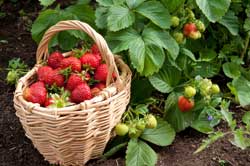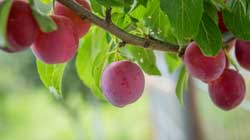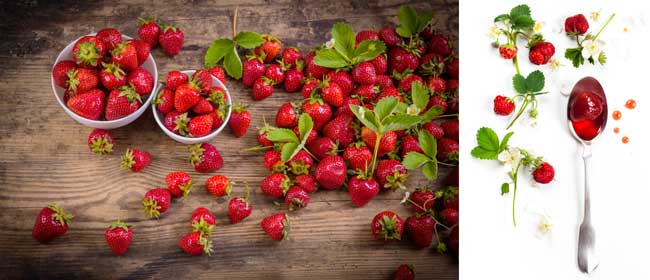Daltons answers your gardening questions. Plus, your chance to win!
Send us your gardening question and be in the draw to win! Each month Daltons will answer one of your questions, which we’ll feature here. Email your question to the address below (make sure you mention which area of the country you live in – it might be important to the answer – and if necessary include a photo) and be in the draw to win a prize pack.
The last two months’ winners were: Rosemary Phillips, Sandy Shortt-Smith and Raewyn Lennon. See their questions, with the answers, below.
OCTOBER 2016
This month’s prize: 2 x Daltons Premium Tomato Packs
 Nothing beats luscious red tomatoes straight from your own garden, and with plenty of varieties available, there is something for everyone. Tomatoes require plenty of nutrition and water, especially around fruiting time. By applying Daltons Tomato Fertiliser you can count on a stronger, healthier plant.
Nothing beats luscious red tomatoes straight from your own garden, and with plenty of varieties available, there is something for everyone. Tomatoes require plenty of nutrition and water, especially around fruiting time. By applying Daltons Tomato Fertiliser you can count on a stronger, healthier plant.
We have 2 x Daltons Premium Tomato Packs to give away which have everything you need to grow tasty tomatoes. Each pack is valued at over $80 and contains 2 x Daltons incredible edibles® Tomato Mix, 1 x incredible edibles® grow bag, and 1 x Daltons incredible edibles® Tomato Fertiliser. PLUS a pair of comfortable, versatile Red Back gardening gloves from Omni Products.
To be in to win, EMAIL YOUR GARDENING QUESTION, name and glove size to: sweetliving@daltons.co.nz and put ‘Daltons Premium Tomato Pack’ in the subject heading. Entries must be received by end of day 30th November, 2016.
![]()
 Q. I have a great strawberry bed and my husband built a brilliant frame with bird netting to put over it so I can keep the birds out. Bait keeps the snails under control, but how can I keep the earwigs out? Last year they decimated my crop, so I hope you can help. Rosemary Phillips
Q. I have a great strawberry bed and my husband built a brilliant frame with bird netting to put over it so I can keep the birds out. Bait keeps the snails under control, but how can I keep the earwigs out? Last year they decimated my crop, so I hope you can help. Rosemary Phillips
A. Because earwigs forage at night and hide during the day, they are not an easy insect to control. Excellent garden hygiene is a good starting point. Ensure your garden does not have stacks of old timber, rotting foliage or old bricks, which are places earwigs love to hide.
We also suggest placing some sticky traps around your strawberry plants. Try ones that are used to catch flies or problem moths. These traps have a sticky surface upon which insects are caught.
Earwig infestations tend to be sporadic. In many gardens in the same year, numbers are enormous, and then the following years there are hardly any. Hopefully this year it is a lack of for you.
Another thing to try is to make a simple trap by laying sections of bamboo open at the ends, placed in the garden. The traps should be inspected each morning and should contain large numbers of earwigs, which can then be disposed of.
For more tips and advice check out our How To Guides at our website http://www.daltons.co.nz/home-gardening/how-to-guides.
Q. Last year I replaced all old strawberry plants with new plants. I put in sheep poop and strawberry fertiliser and watered consistently all season. The strawberries were of a good size and flavour but not prolific. During autumn/winter this year the plants looked very sad with lots of dry, old leaves. I removed all of those old leaves and they have come up very smart, lush and green. Will they produce more fruit this second fruiting and are the leaves with a black spot on needing a spray or just removal when seeing? Sandy Shortt-Smith
A. Strawberries will crop regularly and heavily in the first and second years after planting, as long as the plants are healthy and growing in a sunny position in well-drained soil.
Where plants are suspected of being diseased, they should be removed and replaced with new healthy plants at the end of the growing season.
Placing pea straw, hay or clean crushed bark around the growing plants not only provides a clean bed for the strawberries, but also helps prevent waterborne diseases that can affect strawberry plants.
Some black spotting of the leaves may not necessarily be a sign of any fungal or bacterial disease; however you should regularly check your plants to ensure there are no further problems.
At the end of the second year, as long as the plants are still healthy, remove young offsets and replant while removing the original parent plant. Add in Daltons Incredible edibles Strawberry Mix or try GARDEN TIME Chicken and Sheep pellets, which are a great blend of both organic manures in the one product.
For more advice check out our How to Grow Strawberries at our website http://www.daltons.co.nz/home-gardening.
 Q. I would like to know the name of a dwarf, dark-coloured, sweet plum to plant in my garden. Raewyn Lennon
Q. I would like to know the name of a dwarf, dark-coloured, sweet plum to plant in my garden. Raewyn Lennon
A. Unfortunately, there is still no dwarf root stock for plum trees. However, by careful pruning you can maintain a healthy fruitful plum tree at around 2.5 to 3 metres.
If you require a dwarf fruit tree, we suggest growing an apple. They can be purchased on dwarf root stock called M26 that produces a very small tree, or M9 that produces a dwarf tree growing to 2.5 metres.
For more advice check out our How to Grow Fruit and Berries guides at our website http://www.daltons.co.nz/home-gardening.
 My Favourites
My Favourites










Speak Your Mind